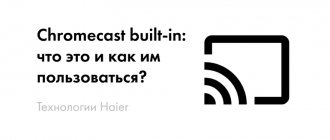Once upon a time did Full HD seem like the sharpest picture you could get? 4K resolution has four times more pixels than Full HD, and it completely changes the level of visual detail and clarity we're accustomed to on our screens.
While traditional Full HD is limited to 1,920 vertical columns and 1,080 horizontal rows of pixels, Ultra HD has a total resolution of 3,840 by 2,160 pixels—slightly lower resolution than the 4,096 x 2,160 resolution seen on cinema screens (Cinema 4K).
We tend to be a little wary of new TV technologies that try to tempt us into parting with our hard-earned cash (thanks 3D), but when it comes to 4K, there are a few pluses. Over the past few years, the entry price barrier has dropped significantly, with 4K offered on all kinds of budget and mid-range TVs, and it's never been easier to install a 4K UHD TV in your home.
This is especially useful for TVs that are 50 inches or larger.
After all, it might not just be the 4K resolution that will tempt you into your next TV purchase, but also the inclusion of other interesting technologies such as High-Dynamic Range, Quantum Dot and QLED.
What is 4K resolution
Simply put, 4K means a clearer picture. That's more pixels (8,294,400 to be exact) on the screen, making images sharper and capable of displaying more detail than standard HD.
4K resolution, at least as most TVs define it, is 3840x2160, or 2160p. In comparison, Full HD 1080p resolution is only 1920x1080. A 4K screen has about 8 million pixels, which is four times more than 1080p can display.
Think of your TV screen as a table with rows and columns. A Full HD 1080p image is 1080 rows high and 1920 columns wide. A 4K image doubles the numbers in both directions, resulting in a quadrupled total number of pixels. In other words, you can fit every pixel in a 1080p set onto one quarter of a 4K screen.
Why is it called 4K
Because the image is about 4000 pixels wide. And before you ask, yes, the manufacturers called the resolution Full HD 1080 for the height of the image, but for 4K they chose the width. That's why Ultra HD is sometimes called 2160p. Welcome to a future that is confusing.
What format is 4K
The first information about this format appeared back in 2012, when developers from leading companies were actively working to increase the value that determines the number of pixels per unit area of the image. World-famous manufacturers were interested in the emergence of new technologies. After all, they would help attract the attention of the target audience.
Representatives of LG brought a 3D-TV with support for the 4K UHD format to one of the presentations held in 2012. Competitors also tried to keep up. Therefore, very quickly 4K TVs from other brands began to appear at such exhibitions.
Even 6 years ago it became clear that the new standard would take root. Colorful and realistic images began to appear on the screens, attracting the attention of users. However, in 2012, not everyone could afford to purchase such a device. Therefore, we had to wait a little over 5 years until the format began to be used everywhere.
What is 4K? This is a new format that replaced the outdated 2K (appeared immediately after Full HD). Many users completely missed 2K TV because it didn’t exist for long. Today, such screens are used in the process of creating displays for mobile phones.
The key feature of 4K compared to its analogues is its high resolution. There is a maximum number of pixels per unit area of the image. If we compare the new format with 2K, it is almost twice as good as its predecessor. Now you know what the 4K standard is for.
There is no single resolution for this format. There are six different standards:
- full frame – 4096x3072 pixels. Almost unpopular;
- academic – 3656x2664 pixels. Actively used by film studios;
- cassette - another cinematic side with a resolution of 3996x2160 pixels;
- DCI – used in video cameras. Modern smartphones support this standard. Resolution 4096x2160;
- widescreen - standard used in the field of cinema. Resolution – 4096x1716;
- Ultra HD – ultra high definition television. This is the standard supported by modern TVs. Resolution – 3840x2160 pixels.
It is UHD that is most popular among all existing standards.
Do extra pixels matter at 4K?
They are very important. More pixels means more information. More information means a clearer picture. A clearer picture is more attractive. More engaging content is more fun. And fun... it's fun, isn't it?
Will I see a huge difference?
Here lies the catch. We talked about the resolution jump when we went from SD (480 lines high) to Full HD (1080 lines high). And 4K screens are noticeably sharper than 1080p screens. But there are a few reasons why you might not get the same feeling you had when you upgraded your old CRT to a flat screen.
When most people moved from 480 to 1080p, there was a good chance they also made a big jump in TV size. In terms of wow factor, display size is more powerful than any resolution jump. Recently, most people have reached some kind of screen size limit - the most popular models are in the range of 40 to 70 inches.
But the best part is that you'll be able to see the difference in 4K resolution if you 1) watch 4K content and 2) sit close enough.
What do you mean, close enough?
Remember how Apple made a fuss about how "retina" displays worked "the same" as older iPhones? "Retina" refers to screens that have enough resolution that, at a normal viewing distance, your eye cannot distinguish individual pixels. Step far enough away from a 1080p monitor and you'll see... a retina display!
More importantly, at the same distance, your eyeballs won't be able to see any more detail in a 4K image than they can in Full HD. If you're at "retina distance" from your 1080p TV and don't plan on moving the couch closer, upgrading to 4K might not make much of a difference to your experience.
That is, 4K will allow you to sit closer to the TV
Yes. The ability to get closer to the screen without destroying the image is one of the most intoxicating things about 4K. Sitting close in front of a screen of the same size will fill more of your field of view, resulting in better immersion. The proximity factor is one of the reasons why 4K computer monitors have become one of the fastest growing sectors in technology. 4K monitors remain clear even when you're less than two feet away.
Advantages and disadvantages of the format
The strengths of TVs that support this format are obvious:
- high-quality, realistic, rich and clear image. All parts of the picture have excellent detail, there are no defects;
- 4K devices are ideal for video game fans. Thanks to the maximum realism of the image, the game will be much more interesting;
- Screens with maximum resolution are suitable for professional photographers and camera operators. Editing photos and videos on a high-resolution screen is much more convenient;
- You can display your presentation on the big screen. A high-quality picture will also come in handy when surfing the Internet.
4K TV means high-quality and realistic images. However, there are also some disadvantages. Let us list the main weaknesses of the format in question:
- TV channels included in free digital TV multiplexes are broadcast at best in 720p quality. Therefore, it is absolutely impossible to appreciate all the advantages and maximum clarity of Ultra HD while watching television.
- There is also very little 4K media content on the Internet. At best, you will find a few films and clips.
- A TV that supports this format is much more expensive than its Full HD counterparts. We are talking about an overpayment of $150-200. Provided identical functionality.
- Gamers will also face problems. Even new games released on PlayStation 4 and Xbox One consoles do not support this format. Therefore, you will have to play only online applications, which are also very few.
Image quality is about more than just screen resolution. You need to take into account sharpness, GPU power, noise reduction features, etc. Therefore, sometimes a cheap 4K TV will have a lower quality picture than a regular device with Full HD resolution.
Difference between Ultra HD and 4K
Technically, "Ultra High Definition" is a derivative of the 4K digital cinema standard. However, while the local multiplex displays images at native 4096 x 2160 4K resolution, the new consumer Ultra HD format has a slightly lower resolution of 3840 x 2160.
This is one of the reasons why some brands choose not to use the 4K label at all, sticking with Ultra HD or UHD instead. However, the numerical abbreviation seems clearer.
HDR + WCG + Wide Color Depth
A common belief is that HDR inherently has a wide color gamut and a color depth of at least 10 bits. In practice, these three technologies are usually combined with each other, and for good reason - their combination provides a significant improvement in color. For example, a higher bit count helps prevent roughening of color transitions that can otherwise easily occur when increasing the dynamic range.
In fact, all three technologies can exist independently of each other and may provide some benefits. 10-bit and 12-bit color have already been tested on Full HD Blu-ray in Japan. A few years ago, Panasonic launched the Master Grade Video Coding (MGVC) format, which contains a sort of enhancement layer with two or four extra bits to achieve 10 or 12-bit color. However, only special Panasonic BD players could decode the added bits. Several Studio Ghibli animated films have been released in this format.
HDR without WCG and without deep color resolution is used in the proprietary HDR format of Brazil. Several companies united in SBTVD (Sistema Brasileiro de Televisão Digital), including Globo, have agreed on an intermediate broadcast format that uses SL-HDR1 (Technicolor Advanced HDR) with Rec.709 color space, 8-bit color and MPEG-H audio . It can be streamed in AVC (H.264) over ISDB-Tb or in HEVC over 5G. Granted, we'll have to wait and see how it works, but the fact that it exists shows that HDR has a lot of options.
Because the three technologies listed work so well together, they are usually combined. And many probably assume that 10-bit video and WCG are an integral part of HDR, although this is not the case. Perhaps a name other than HDR would be better for this feature package—say, "Ultra Color." Then we would have the consonant Ultra High Definition and Ultra Color, but now it’s too late to talk about this topic - the names have become established and are used all over the world.
Why should I choose 4K Ultra HD
There are many reasons why 4K makes you rethink your next TV purchase, but not all of them are immediately obvious.
Photographers who regularly view their work on an HDTV see only a fraction of the detail inherent in their images than when they view them in 2160p.
A 4K display reveals so much more nuance and detail - the difference can be astounding. While 3D proved to be a fun diversion, 4K comes with no strings attached. Its higher resolution images are simply better.
The higher pixel density of a 4K panel also allows you to get much closer to it without the grid structure of the image itself becoming visible - meaning you can comfortably look at a much larger screen from the same seat as your current Full HD panel.
Next generation audio
The only non-video requirement for UHD is audio. Next-Gen Audio (NGA) is considered audio that goes beyond traditional multi-channel formats like Dolby Digital, DTS-HD and the like. In particular, we are talking about object-based surround sound systems that can use the height channels, making the sound truly three-dimensional. Three formats compete in this area: Dolby Atmos, DTS:X and MPEG-H (actually four, including Auro-3D - translator's note).
Dolby Atmos for the home works a little differently than in theaters, but aims to achieve the same goals: precisely placing sounds anywhere in the 3D space in which you watch movies. Where a movie theater system can process up to 128 audio objects and address 64 different channels (speakers), a home system adds a spatially encoded substream to the Dolby Digital Plus and Dolby TrueHD signal or is recognized as metadata in the Dolby MAT 2.0 (Metadata Enhanced Audio Transfer) format. Streaming services use the lossy Dolby Digital Plus format. Ultra HD Blu-ray discs and the Kaleidescape platform, which allows you to download Ultra HD movies, use the lossless Dolby TrueHD format.
A more detailed description of how it works is beyond the scope of this article, but Dolby Atmos has found its way into home systems primarily through video streaming platforms, movie downloads, Blu-ray and Ultra HD Blu-ray - and to a lesser extent via broadcast television. BT TV in the UK is one of very few operators to use Dolby Atmos for live TV broadcasts of football matches. Moreover, they have been doing this since 2017.
Another important source of Dolby Atmos audio is video games. Xbox One already supports Atmos in games, and so does Xbox Series S/X. On the other hand, the PS5 uses Sony's proprietary object-based 3D audio system called the "Tempest Engine."
In terms of practical use, of course, you don't need to install 64 speakers in your living room like you would in a movie theater. You may have a range of regular floorstanding speakers that make up a 7.1 or 9.1 channel configuration with the addition of two or four height channels - this will give you what is called 9.1.4.
There are more practical alternatives, including upward-firing speakers, which make in-ceiling speakers unnecessary. And since every sound is essentially created using computational mathematics known as psychoacoustics, you can now get Atmos support even in TVs, soundbars and smart speakers.
DTS:X is a similar system from Xperi, the company behind DTS. It is supported by all modern AV receivers, as well as TVs and soundbars. Like Atmos, DTS:X is available on Blu-ray and UHD Blu-ray discs. However, you won't find it on streaming services - and it's not used for TV broadcasts.
Broadcast television is likely to be the primary resource targeted by MPEG-H. This format with the least memorable name was developed by the Fraunhofer Institute, which played a key role in many compression standards up to MP3. It is used by various UHD broadcasters in South Korea in combination with ATSC 3.0 video.
Ultra HD Premium
If you think all these new technologies and acronyms seem confusing, you're right. That's why a group of companies decided to create the UHD Alliance to determine what technologies should be included in the next generation of TVs.
The UHD Alliance is made up of 35 companies, including TV manufacturers such as LG, Panasonic, Samsung, Toshiba, Sony, Sharp, audio companies such as Dolby, and film and TV production companies such as Netflix and 20th Century Fox.
The idea is that if everyone can agree on what features they think should be included in UHD, then Disney (an example of an alliance member) can create a movie that Netflix can stream through a Samsung TV, and the picture will be exactly that , as the director of Disney intended it.
The result of this alliance is the UHD Premium specification , announced at CES 2021. This specification contains a list of features that must be included in products such as TVs and Blu-ray players to ensure maximum compatibility with other content and equipment being produced.
Currently, to meet the UHD Premium specification, a product must have:
- Resolution no less than 3840×2160
- 10-bit color depth, allowing 1024 shades of each of the three primary colors: red, green and blue, as opposed to 256 allowed for the 8-bit standard.
- Be capable of displaying pixels at a specific brightness and darkness for HDR purposes (technically, this light level ranges from 0.05 to 1000 nits on LEDs and 0.0005 to 540 nits on OLED sets). Following this standard means that the black should look truly dark, not just milky black, and the white will actually show up.
Now that this standard has been defined, you just need to make sure your next purchase has the "Ultra HD Premium" logo, and you don't have to worry about whether your set will be compatible with 4K content.
Except... it's not that simple
Samsung and Panasonic are committed to the new standard, and both manufacturers wear their UHD Premium badges with pride.
Sony, however, decided to take a more confusing route and decided to stick with their internal "4K HDR" labeling, despite the fact that their sets actually meet the required specification. Philips will use the alliance badge, but its kits are not yet up to spec. It's only natural that these issues will continue to exist as technology continues to evolve, but we hope that we'll soon be able to recommend UHD Premium without reservation. However, until the entire industry clearly supports the standard, we still recommend that you proceed with caution to ensure maximum compatibility.
Bottom line
Without a doubt, 4K UHD looks like the most promising resolution today. Manufacturers of televisions, set-top boxes, cameras, and film companies are hinting at this with their new projects. We can say with confidence that 4K resolution has settled on the market for the next 5 years, during which it will try to capture it completely, displacing its predecessors.
Yes, many companies are interested in 8K resolution, but so far these are just developments that are very far from commercial production, and besides, it will not immediately become widespread, as it was with 4K. Based on this, we conclude that in the coming years, preference should be given to 4K UHD.
What is 4K OLED
Even more abbreviations! Isn't this fun? OLEDs—organic light-emitting diodes—have been around for some time, but producing large screens using the technology has proven prohibitively expensive, which has until now prevented OLED TV from becoming a mainstream offering.
It's a real shame because OLED technology can be stunning, offering vibrant colors, deep blacks and bright whites. But don't lose hope. Several companies (most notably LG) are working hard to bring OLED to 4K TVs . They're certainly great, although prices remain high - and it's widely accepted that they don't have the longevity of LCD screens.
Conclusion
A few years ago, when Ultra HD was just starting to roll out, it became obvious that many of the technologies that were supposed to be implemented would not be introduced at the same time. Now all the components of this format are in place. It also became clear that broadcast television would only make limited use of these new features.
Luckily, we have many other sources that use them, including streaming video, physical media, games, and user-generated content. So you don't have to wait any longer to enjoy them.
Original: The Six Pillars of Ultra HD
Why TV is not broadcast in 4K
Because each 4K frame contains four times more frame information than HD, 4K content is four times bulkier than regular HD content in terms of source file size. This makes it difficult to deliver.
When it comes to streaming, bandwidth is a definite issue. Netflix already dominates overall Internet traffic, prompting ISPs to seek additional resources, but most of its streams are broadcast at SD and HD levels.
Upgrading to 4K doesn't seem like a smart option just yet. And even if it were possible to stream 4K content to everyone without interrupting your internet experience, streaming 4K content requires an Internet connection of 25 Mbps or higher, which is faster than most people have right now.
Is it worth buying a 4K TV now?
The market value of such devices is rapidly falling. However, there is still very little content in this format. Consider 4K technology in TVs as an optimal solution in the near future. As a result, you can get maximum pleasure from watching new cinematic releases at home.
The development of innovative technologies is a dynamic process. Therefore, the amount of media content will gradually increase. It will be distributed not only online, but also through Blu-Ray discs.
There are a lot of popular TV models that support this format. But only now the channels (not all) are broadcast in HD. Although this format appeared back in 1998. Perhaps the popularization of 4K will happen faster.
Now there is no point in overpaying for this permit. A regular TV with Full HD support is quite enough.
https://www.youtube.com/watch?v=eRXDt47aE-0
What to watch in 4K
The best UHD options are available on Netflix and Amazon right now.
Netflix leads the way, with most original shows (The Defenders, House of Cards, Dark, The Blacklist) available in 4K, along with select films (Ghostbusters, The Smurfs 2). The selection may be more limited than the amount of HD content available, but it is increasing day by day.
Amazon also offers 4K UHD streaming for some popular shows - Mozart in the Jungle, The Man in the High Castle, The Grand Tour and Mad Dogs.
Both streaming services say even more content is coming soon and expect the rollout to accelerate once TV viewers switch to the higher-definition standard.
What is the difference between 4K resolution and 1080p
The difference between the 4K format and HD is the pixel concentration increased by 4 times. The resulting image has high contrast and improved color reproduction. But due to the increase in resolution, the requirements for the throughput of patch cables and connectors increase.
Is it worth taking something higher than Full HD?
The use of equipment that supports 4K resolution is justified if there is video in 2160p or UHD format. The required 4K content can be stored on your computer's hard drive. And also on laser media or provided by the provider. For example, Apple offers high quality movies on iTunes. Also, the Russian platform NTV-Plus launched the transmission of Ultra HD channels in 2021. It broadcasts the Festival 4K channel, which is part of the basic program package.
What cables do you need for 4K?
The two standard cables you'll most likely use are either standard HDMI or, if you're connecting your PC to an Ultra HD monitor, DisplayPort.
HDMI cables now come in four varieties: High Speed with Ethernet; high-speed without Ethernet; standard speed with Ethernet and standard speed without Ethernet. Standard speed cables are capable of 1080i resolution, but do not support 4K bandwidth. High speed cables can do anything higher than 1080i. As long as you use the same grade of cable, there is no difference in performance between a set of cables from one manufacturer and a set from another.
The speed of your connection, however, will depend on the types of connectors. HDMI 1.4 connectors support 3820x2160 resolution at 30 frames per second, while HDMI 2.0 can output Ultra HD video at 60 frames per second, and HDMI 2.0a supports HDR.
The latest HDMI 2.1 specification is still on the way – it transmits 4K at 120fps or 8K at 60fps.
The bottom line is that if your HDMI cable can handle 1080p (the standard for a number of years), then it can also handle 4K. Don't be fooled by buying expensive cables.
Another type of cable you can use is DisplayPort. DisplayPort transfers 4K images and audio from most high-end graphics cards to monitors without any noticeable artifacts or lag.
4K resolution and others - how many pixels are these?
4K resolution
Resolution is considered to be the size of the image we receive on the screen. However, these are not reference dimensions, like inches, but a value that determines the pixel density per unit area. It's difficult, isn't it? To put it simply, the detail of the image depends on the resolution: the higher the resolution, the clearer the image. But, as often happens, additional conditions must be taken into account. As an example, not every person at a great distance will be able to distinguish Full HD from 4K.
The pixel from which the image is constructed is an indivisible object of a rectangular shape (sometimes round). The quality of the picture depends on the pixel density (number per unit area). Speaking of resolution, pixels indicate the ratio of the width to the height of an image.
For example, Full HD – 1920×1080 pixels, we multiply the numbers and get that the image consists of 2073600 pixels. The newer the resolution, the more pixels the image consists of, and, therefore, the more detailed it becomes.
Some of the first resolutions, corresponding to the screen sizes of that time, were represented by an extremely low pixel density. QVGA, a once popular format for mobile phones and some computer monitors, had a resolution of only 320x240 pixels, which today looks extremely low.
Modern devices adhere to the most popular resolutions:
- HD (1280×720),
- FullHD (1920×1080),
- 2K (2560 x 1440),
- 4K (4096 × 3072) with their varieties.
Without fully developing these permissions, companies lead users to others by colorfully advertising key features. Although for most of us, Full HD is still quite enough.
4K resolution and its standards
4K, like many other resolutions, is divided into several standards that differ in the number of pixels:
| Standard | Resolution, pixels | Aspect Ratio | Total pixels |
| Full frame 4K | 4096 × 3072 | 1,33:1 (4:3, 12:9) | 12 582 912 |
| Academic 4K | 3656 × 2664 | 1,37:1 | 9 739 584 |
| Ultra HD | 3840 × 2160 | 1,78:1 (16:9) | 8 294 400 |
| Casketed 4K | 3996 × 2160 | 1.85:1 (Flat) | 8 631 360 |
| DCI 4K | 4096 x 2160 | 1,89:1 (256:135) | 8 847 360 |
| Widescreen 4K | 4096 × 1716 | 2.39:1 (Scope) | 7 020 544 |
4K resolution has replaced 2K, exceeding it in each line by about two times. 2K simply did not have time to become widespread before 4K appeared, so it is not particularly successful. In fact, the goal of 4K was to oust Full HD from the market, which has taken root here since 2007. One of the most noticeable differences between them was the number of pixels, which are 4 times less in Full HD. If we compare 4K with analog television, which is gradually becoming a thing of the past, then there are 23 times fewer pixels.
From the standards table you can see that 4K resolution is divided into as many as six standards. However, the average user usually encounters Ultra HD. Full-frame 4K is used only in specialized devices; academic, widescreen, DCI and cassette are applicable in cinematography.
As you may have noticed, in advertising of various devices they generalize the designation 4K and Ultra HD, which, although similar, have differences. Ultra HD (Ultra High Definition) has become a generally accepted standard, which is followed by both manufacturers of modern televisions, set-top boxes and other equipment, as well as television companies.
4K and FullHD
The main rival of Full HD was 4K, which turned out to be more progressive than its predecessor - 2K. Every year, the lines of televisions and set-top boxes are replenished with new models, and ultra-high-resolution video appears more and more. If at first, as soon as 4K began to develop, the average user could only dream of it, today he can provide it without much difficulty.
Many companies, when releasing a new 4K TV model, significantly reduce the price of the previous one. Thus, new models with Full HD and last year’s UHD are sold with the same price tag.
Are there noticeable differences between 4K and FullHD?
Yes, and you don’t need to be an expert to notice them. It is enough to look at two TVs with the same diagonal to see the difference in detail. Of course, this needs to be done at a fairly close distance to the TVs - at a greater distance the difference is minimized. Therefore, when choosing a 4K TV, you need to compare the area of the room and the diagonal in order to enjoy the quality in the future.
Many experts agree that a 4K TV should have a diagonal of at least 55 inches, larger is better. Otherwise, you don’t have to overpay, giving preference to Full HD. Also, when buying a TV or other equipment for viewing 4K content, you should pay attention to the HDMI version (a digital interface for outputting sound and image in high quality).
Full HD uses the old HDMI, which only provides 30 frames per second. The new version 2.0, supported by 4K devices, increases the throughput to 60 frames per second, which gives clearer images and smoother movie playback.
In addition, the differences between these two resolutions include additional features that improve image quality. They were introduced by the developers in 4K to attract the maximum possible number of users. For example, the HDR (high dynamic range) function. If you are interested in the smartphone market, then you have probably come across this designation in camera reviews. The technology has made its way to 4K TVs, providing an expanded range of colors for a deeper immersion in the movie. However, for the HDR feature to work, some conditions must be met:
- Firstly, the TV, of course, must support it.
- Secondly, the content must be in HDR10 or Dolby Vision format.
Dolby Vision, which we just mentioned, is also a feature of 4K resolution. This is a format that provides deeper colors, better brightness and a number of other nice features. However, today it is not as widespread as we would like. And TVs with its support cost a lot of money.
Each company working with 4K resolution tries to add something of its own to it, which becomes a “feature” of a given manufacturer or is massively introduced into devices from other companies. Regardless, 4K is an ambitious and fast-growing resolution that is changing the way we view movies for the better.
Where can I find movies to watch in 4K?
Relatively recently, purchasing a 4K TV or set-top box with high-definition support could be called stupid - the price is huge, and the content is minimal. However, the trend quickly changed with the advent of 4K cameras, and film companies and studios developing games began to rely on high-definition resolution.
There is more and more content every hour: while you are reading the article, someone filmed the beauty of Lake Baikal in UHD and uploaded it to YouTube. Large film companies are not far behind, they need to constantly surprise viewers with quality. What can we say about new games whose developers prioritize 4K resolution, which can take the project to a new level.
I would like to reassure those readers who decided that on a 4K TV you can only watch content in the appropriate resolution. No, that's not true. You can play absolutely any movie in any resolution. In addition, manufacturers of TV boxes and 4K TVs equip their products with support for technology that makes movies in HD, Full HD or other resolutions more pleasing to the eye.
The question is the price and is it worth buying a 4K TV?
Do not miss:
- What are Ultra HD and 4K, how do these resolutions differ and what…
- Review of Apple TV 4 features: is it worth buying for Russian-speaking users
- How to choose a good phone: revealing the secrets of the right choice
If you are no longer satisfied with your old TV or it has completely served its purpose, then you should definitely take a closer look at models with 4K. They are gradually ceasing to be something premium and exorbitantly expensive. Budget solutions with 4K can be found for 30,000 - 35,000 rubles, which is not much more expensive than models with Full HD. Moreover, for this money you will get a modern TV, the resolution of which will not cease to be relevant in the near future.
Smart TV set-top boxes with 4K support
Recently, Android TV set-top boxes, which are small computers, have become very popular. Thanks to the efforts of processor manufacturers, most of them can boast of 4K support, while remaining in the budget segment. Today, for 2000-3500 rubles you can buy an excellent set-top box that will help you watch content in high definition.
If the TV does not support 4K resolution, then the TV Box simply will not be able to display the image in this resolution, adapting to a lower one.
Large 4K monitors
The larger the screen diagonal, the more noticeable the advantage of high resolution becomes. Therefore, in this section of our article we will consider large monitors with QHD resolution. Their high cost is compensated by the corresponding technical characteristics. As in the previous section, after analyzing the “filling” of the displays, it will be indicated for which tasks it is more suitable.
Philips BDM4350UC
A real giant from Philips has a diagonal of 43 inches, which even some TVs will envy. Of course, the LED-backlit display is also equipped with a good brightness of 300 cd/m2 and a contrast ratio of 1200:1. “Just in case” there is also a VGA connector, in addition to DisplayPort and HDMI. There are also built-in speakers, which will help in the absence of good acoustics. In general, the monitor does not have supernatural characteristics, and therefore it can safely be classified as a universal monitor. It is suitable for both gaming and design or editing.
Acer Predator Z35P
This display from Acer is a “classic” gaming monitor, with all the features aimed at getting the most out of your gaming experience. The large 35-inch screen has an ultra-wide 2.39:1 format and a resolution of 3440x1440. An additional assistant in immersion in the process is a curved screen with a radius of 1800 mm, which allows you to capture more of what is happening on the screen. The response speed corresponds to the class of gaming monitors - 4 ms, and the contrast is beyond praise and is 2500: 1. The Acer Predator Z35P is truly an excellent gaming monitor that can satisfy the needs of a gamer.
Dell U4919DW
The 49-inch model from Dell is unlikely to be suitable for a professional gamer, but it will please those who need it for work. The curved screen with a resolution of 5120x1440 can accommodate a large amount of information. The remaining characteristics do not stand out in any way, and the reaction time of 8 ms is completely alarming. However, a minimum response is not needed for operation, and this display will cope with the rest of the functions assigned to it with a bang.
Asus PA328Q
Another universal monitor with a diagonal of 32” and a 16:9 format. The characteristics are also very versatile, and therefore suitable for both programmers and photo or video editing.
Samsung c49HG90DMI
The last monitor on our list has a 32:9 format and is aimed at the gaming audience. The 49" curved screen has a refresh rate of 144 Hz, which makes frame changes smooth. The response speed is 1 ms, which will delight any game lover. However, it is also suitable for work, since it displays very rich colors. In addition, the wide format can easily replace two 27-inch displays with a “classic” aspect ratio.
UHD TV models are getting cheaper
There is already a trend towards lower prices for 4K TVs : currently the cost of UHD models from Sony, Samsung and LG has dropped to 150,000–200,000 rubles, and Chinese analogues can be purchased for only 50,000. In 2014, we will be surrounded by TVs with OLED screens and LCD models with 4K resolution (3840 x 2160 pixels). Previously, purchasing 4K TVs on the market was the lot of geeks due to the very high price (even up to 1 million rubles). Since 2013, you can purchase very affordable models from Sony, Samsung, LG and other companies. Before the end of this year, a new firmware version will be released for Sony X9 UHD TVs, thanks to which they will be able to play 4K video at 60 frames/s via HDMI (HDMI 2.0 standard requirements).
The Sony KD-84X9005 TV is the first device from the Japanese company with UHD resolution (screen diagonal size is 84 inches), available for purchase since the end of 2012 at a fabulous price of 1 million rubles. In 2013, models of the X9 line with diagonals of 55 and 65 inches went on sale, delighting users with excellent quality not only of images, but also of sound. Their recommended retail prices, after a recent reduction, are respectively $4,000 (135,000 rubles) and $5,500 (185,000 rubles), but in Russia they still cost 200,000 and 300,000 rubles. It is Sony that leads the 4K TV market (it took a market share of 37.8%). LG offers an 84-inch UHD TV: the 84LM960V model can be purchased for 600,000 rubles. More affordable devices with 55- and 65-inch screens (55LA9650 and 65LA9650) should be available before the end of this year.
Samsung's UHD LCD TVs, launched at the recent IFA 2013, feature a curved display that enhances the viewing experience by keeping every point on the monitor equidistant from the viewer to minimize distortion. In addition to these TVs, Samsung's product range includes 55- and 65-inch models (UE55F9000AT and UE65F9000AT costing 200,000 and 285,000 rubles), as well as 85-, 98- and 110-inch devices. Despite the breadth of its lineup, Samsung still controls only 4% of the UHD market.
The first concave LCD TV
Samsung was the first to demonstrate a UHD LCD TV with a concave screen . The new product is available in two versions - with a diagonal of 55 and 65 inches. The model SE50UY04 from the Chinese company Seiki Digital claims to be the “people's” 4K TV. In the American retail market, this device is available for $1,500 (about 50,000 rubles). And the 39-inch 4K model SE39UY04 can be purchased for only $700 (23,500 rubles). Another Chinese company, Hisense, supplies the global market with both affordable UHD TVs, for example the 58-inch XT880 for $2,000 (67,000 rubles), and top-level devices costing at least 500,000 rubles.










